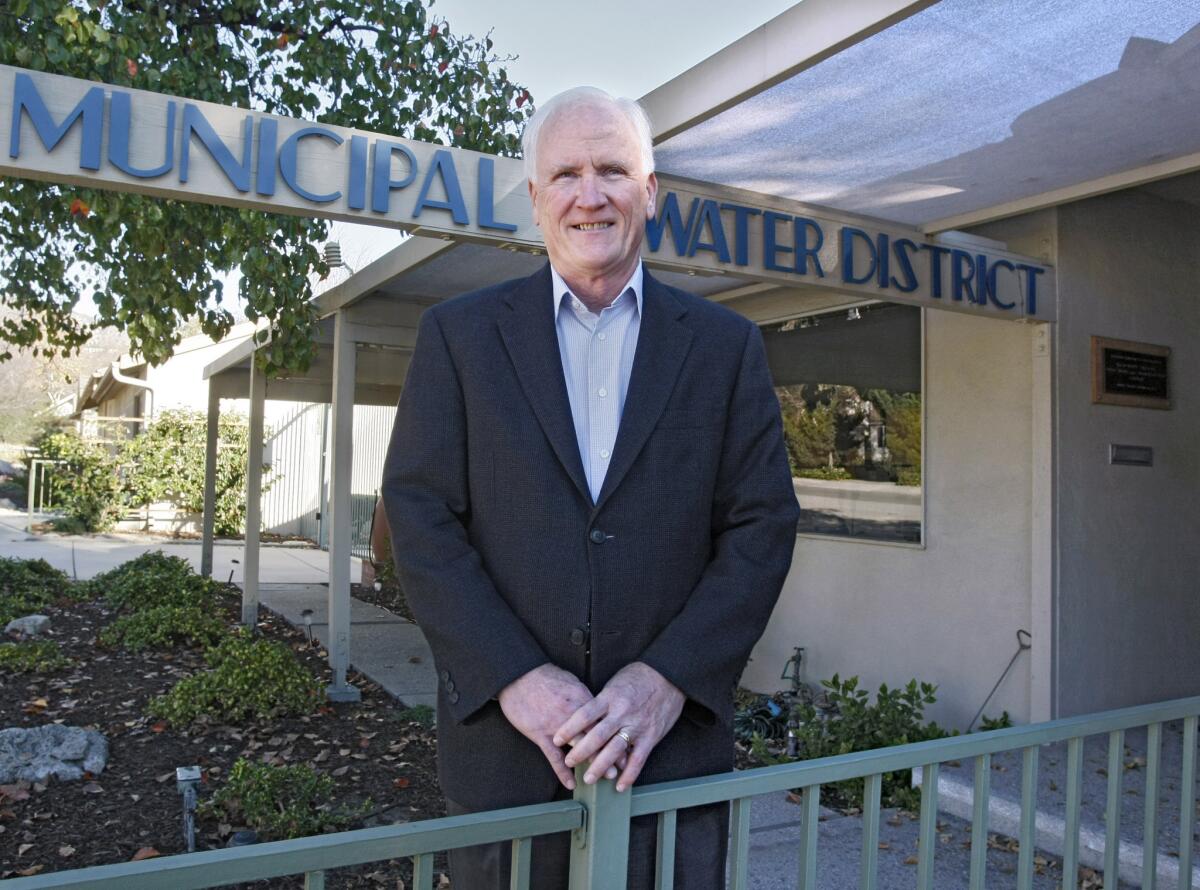State appears headed for a mostly dry year

The December appointment of Foothill Municipal Water District Board President Richard Atwater to the National Academy of Sciences Committee (NASC) came at a time when, according to the U.S. Drought Monitor analysis, 85% of California was categorized as experiencing a severe drought.
2014 is shaping up to be no better, exacerbating the issue on the heels of a record year in which many locations across California reported record lows in rainfall.
Atwater, a La Cañada Flintridge resident, has been on the Foothill Municipal Water District Board since 1986, and his appointment to the NASC includes a two-year term. Prior to that, he served on the Crescenta Valley Water District Board. He joins 11 other nationally recognized experts to prepare a report that looks for the best information, state-of-the-art solutions, and innovative techniques of on-site water reuse of storm water and gray water.
The committee also seeks to identify fatal flaws, flood risks, as well as water quality for both the federal government and city of Los Angeles. They aim to help cities across the United States to be smarter about the kinds of infrastructure that provide more supply benefits.
The National Academy of Sciences was established by Congress over a century ago to provide scientific and technological advice to the nation. The Academy is comprised of four organizations — the National Academy of Sciences, the National Academy of Engineering, the Institute of Medicine, and the National Research Council. The National Academies bring together experts in all areas of scientific and technological endeavor as volunteers to address critical national issues and give unbiased advice to the federal government and the public.
Atwater said he is excited to begin working with the team.
“It’s recognition that some of the most innovative water projects — water conservation and other cutting edge projects — happen in California. I believe I was appointed because of my knowledge of all the excellent practices in our state.”
He acknowledged that there is a lot of work to be done in his new role. “There are reports, research, and there is always new data/projects/science to examine and evaluate,” he said. “It’s our job to identify the best ones and take advantage of them.”
The NASC intends to release their report in June 2015. After meetings in Washington, D.C. and here in Los Angeles, the group will meet in Texas next month. The committee members are not paid for their work, but are reimbursed for their travel expenses.
The work they do is important for La Cañada Flintridge, Atwater said, as the city receives 50% of its water from the Colorado River and Northern California. He points out that La Cañada is very vulnerable to droughts, so water conservation and reuse is therefore crucial for the community.
--
ALSO:Service planned for motorcycle crash victim, area physician Thomas Grosch
St. Francis High soccer’s Glen Appels notches milestone 400th win
JPL joins in celebration of Mars rovers